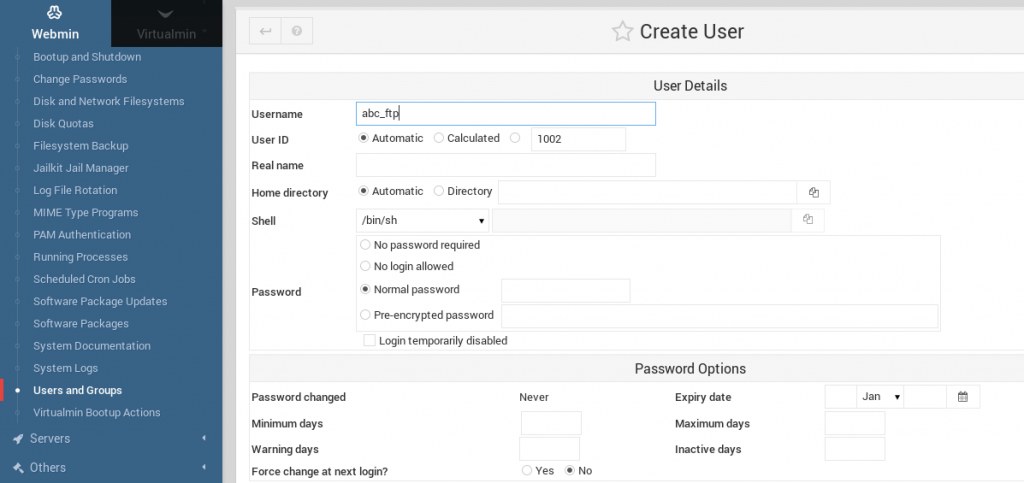All website owners understand the importance of improving server security. In order to achieve that, it is vital for owners to create a separate FTP account for each user on an FTP server.
Here, creating Webmin FTP users is one of the best ways to avoid giving control panel logins to your website developer.
Today, we go step by step on how to create a separate Webmin FTP user with separate username and password and restrict access to both your files and specific folders.
We know this very well because at Bobcares and as part of our Server Management Services, we often get requests from our customers to ‘create FTP user in Webmin’.
Let’s see how Bobcares Support Engineers create FTP user and fix the related errors.
How we create FTP user in Webmin
Unfortunately, the one-click process is not enough to configure FTP users. There are some procedures to follow in order to create FTP users.
For instance, let’s see how our Support Engineers create FTP users ProFTPD server using Webmin.
1. Firstly, we log into the Webmin control panel.
2. Then we go to Webmin > Webmin Configuration.
3. Next, we select the standard module from www.webmin.com and click the button on the right of that option.
4. We then choose proftpd and install the Module.
5. Finally, we click Refresh Modules.
To Create a new FTP user
1. We go to System > Users and Groups > we click on create a new user.
2. Then we set up the following too.
- A username for the FTP account.
- Select Normal Password and provide a password for the account.
- We select a New Group with the same name as the FTP user.
- Select the option Create a home directory. (we create a custom home directory on the customer request.)
3. At last, we click the Create button.

How we fixed errors related to FTP user in Webmin
Let’s see how our Support Engineers help solve errors related to Webmin FTP users.
Wrong Rules in the configuration file
Recently, one of our customers faced problems while creating an FTP user in Webmin. After creating an FTP user, he failed to login into the server by using a newly created user.
Then our Support Engineers took the following steps to solve the issue.
1. We checked the error logs /var/log/secure and /var/log/messages to identify the root cause of the error. Furthermore, we found an error.
Jan 25 10:23:19 myserver xinetd[[28271]]: START: ftp pid=20242 from=ip addy
Jan 25 10:23:19 myserver proftpd[[20242]]: myserver.com (client hostname[[ip addy]]) - USER sk3lly (Login failed): Limit access denies loginThat error indicated that ProFTPd had some access control rules that prevented the user from logging in.
2. Then, we edited the configuration file proftpd.conf.
vi /etc/proftpd.conf3. In the dedicated server, we removed the following entry.
<Limit LOGIN>
AllowGroup ftpusers
DenyAll
</Limit>4. Finally, we restarted the service proftpd.
This fixed the error and the FTP login worked fine.
[Having trouble in creating FTP user on Webmin? We’ll fix it for you.]
Conclusion
In short, Webmin provides a feature to create FTP user. Therefore, it allows authorization access rights for specified users. Today, we saw how our Support Engineers created FTP user in Webmin solved related errors.




0 Comments